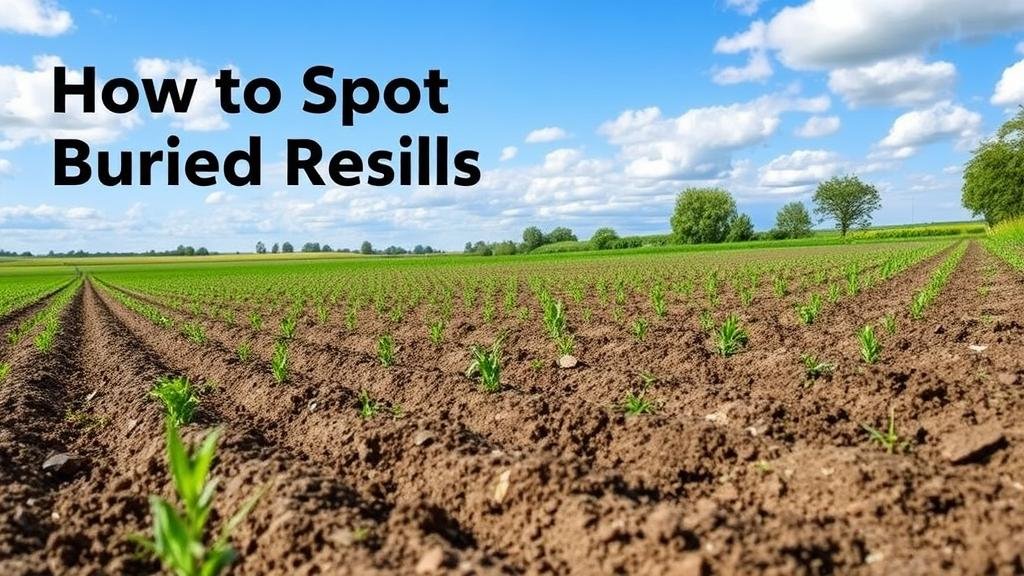How to Spot Buried Relics in Plowed Agricultural Fields
How to Spot Buried Relics in Plowed Agricultural Fields
The discovery of buried relics in plowed agricultural fields has fascinated historians, archaeologists, and hobbyists alike. Understanding how to identify these treasures requires knowledge of agricultural practices, soil types, and relic detection methods. This article explores effective techniques for spotting buried relics, emphasizing practical advice and real-world applications.
The Importance of Location
Identifying the right location is crucial. Many relics are found in fields that have a historical significance, such as those near ancient roads, ruins, or settlements. According to a survey conducted by the Archaeological Institute of America, approximately 40% of amateur finds are made in agricultural fields.
- Proximity to Historical Sites: Many significant artifacts emerge from lands that were once bustling with human activity.
- Soil Type and Composition: Sandy soils are often less compacted, making it easier for objects to rise to the surface over time.
In particular, fields that have been cultivated for generations may yield well-preserved artifacts. For example, fields near Magna Carta sites in England consistently produce medieval metalwork, highlighting how historical relevance plays a key role in relic discovery.
Post-Plowing Evidence
After land is plowed, the newly turned soil offers clues for potential relic hunting. One of the primary indicators of buried treasures is the disturbance pattern of the soil.
- Soil Disturbance: Look for irregularities, such as dark patches or depressions, which can indicate underlying structures or buried items.
- Surface Material: Keep an eye out for shards of pottery, flint, and metal that may be unearthed by the plow.
A classic example is the discovery of ancient Roman coins in plowed fields across the Midlands of England, where artifacts become visible after each plowing season.
Seasonality and Timing
The time of year significantly impacts the visibility of potential relics. In general, autumn and early spring are considered prime times for discovery. Tragically, the conditions of the soil can change due to weather patterns, affecting relic visibility.
- Post-harvest Benefits: After harvest, the soil is often more exposed and offers a clearer view of any surface artifacts.
- Moisture Levels: Wet soil brings items closer to the surface and may lead to increased visibility of metal objects.
For example, extensive archaeological surveys have shown that fields harvested late in the year will often reveal items that were previously buried deep in the soil as the plot is prepared for winter.
Utilizing Technology and Tools
Advancements in technology have transformed how relic hunters search for buried treasures. Metal detectors, ground-penetrating radar (GPR), and GIS mapping tools provide essential information on soil composition and buried artifacts.
- Metal Detectors: Different models provide unique features, from sensitivity settings to depth detection, allowing users to customize their search.
- Ground-Penetrating Radar (GPR): This non-invasive method uses radar pulses to help identify subsurface anomalies without excavation.
For example, archaeologists used GPR to successfully locate the remains of a forgotten Roman villa beneath an agricultural field in Italy, demonstrating the efficiency of technology in relic discovery.
Ethical Considerations and Legal Obligations
Before embarking on relic hunting, it is essential to understand the legal framework surrounding artifacts. Most countries have strict laws regarding the excavation and ownership of historical finds.
- Permissions: Always seek permission from landowners before searching fields.
- Reporting: Report any significant finds to local authorities to ensure proper archaeological processes.
Failure to adhere to legal regulations can lead to disputes and damage to historical sites. For example, several countries have enacted treasure trove laws that provide guidelines on property rights and the sharing of finds with authorities.
Conclusion and Actionable Takeaways
Spotting buried relics in plowed agricultural fields requires a combination of historical knowledge, observation skills, and ethical considerations. By understanding soil composition, utilizing technology, and adhering to legal requirements, enthusiasts can contribute significantly to the field of archaeology.
Key takeaways include:
- Research historical locations prior to searching.
- Be observant for soil disturbances and surface artifacts.
- Employ modern technology to enhance searching efficiency.
- Always practice ethical relic hunting and adhere to local laws.
With these practices in mind, enthusiasts can embark on a journey of discovery that not only expands their own knowledge but also contributes to the preservation of history.



